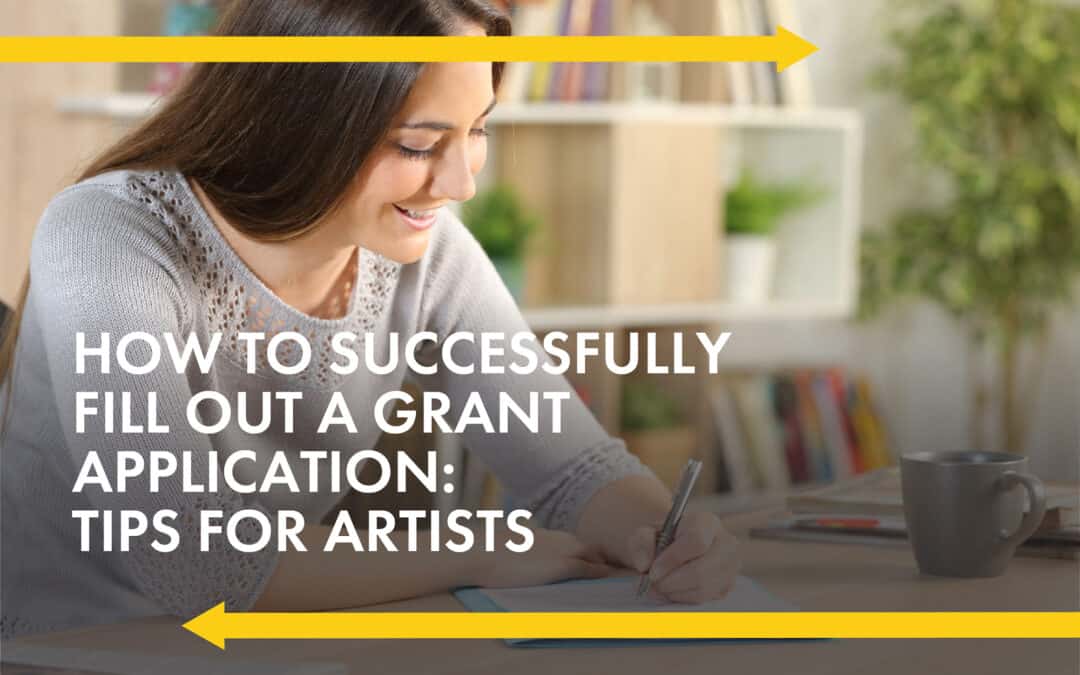How to Successfully Fill Out a Grant Application: Tips and Strategies for Success
As an artist, applying for grants is a crucial step in funding your creative projects, but the application process can feel daunting. If you’ve been wondering how to fill out a grant application for artists, you’re in the right place. In this guide, we’ll walk you through everything you need to know to increase your chances of securing funding, from preparing your project to writing a compelling proposal that meets the funder’s expectations.
Step 1: Preparation – Get Your Project Ready for a Grant Application
Before diving into the grant application process for artists, take time to clearly define your project. Understanding what you want to create and having a solid plan in place is essential to submitting a winning application. Here’s how to get started:
- What’s your project? What kind of art do you want to make—be it visual art, performance, music, or something else?
- When and where will it happen? Is this a one-time event, an ongoing initiative, or a long-term project?
- Who is involved? Will you be collaborating with other artists, organizations, or communities?
- How much will it cost? Do you have a budget in mind for materials, equipment, travel, and other expenses?
- Why is it relevant? Why should this project be supported, and what impact will it have?
Ensure your ideas are clearly outlined before diving into the application process. Take the time to write down who, what, where, when, how, and why—this foundational step will help keep your project focused and aligned with the funder’s expectations.
Step 2: Understand the Funding Landscape
Before you start applying, know your funding options. Research the various funding bodies that exist and what they’re looking for:
- Who are the funders? Government arts councils, private foundations, and professional associations all provide grants. Do you know which ones are a good fit for your work?
- What types of grants are available? Some grants are project-based, others are for artist residencies, and some may offer travel funding or professional development.
To increase your chances of success, be proactive:
- Sign up for newsletters from funding agencies, professional associations, and arts service organizations (like YES Employment + Entrepreneurship).
- Attend orientation sessions offered by arts councils to learn more about the process and what they’re looking for in applicants.
- Create a grant calendar that includes deadlines for multiple grants to ensure you never miss an opportunity.
And remember—don’t try to force your project to fit a specific grant that doesn’t align with your vision. Stay true to your artistic goals and seek out the funding that fits your work.
Step 3: Know the Evaluation Criteria
Grants are competitive, so understanding how your project will be evaluated is essential. Read up on the evaluation criteria for each grant you apply to. Funder priorities can vary, but here are a few common areas they may focus on:
- Artistic merit: Does your project demonstrate creativity, innovation, and a strong connection to your artistic vision?
- Relevance: How does your project contribute to the broader artistic community or to public cultural life?
- Feasibility: Is your project realistic, with a clear plan for execution?
Make sure your application aligns with the funder’s priorities, and don’t be afraid to make it clear in your writing how your project meets these goals.
For example, if applying to major bodies like the Canada Council for the Arts or Conseil des Arts et Lettres du Québec, ensure you’ve had your artist profile approved, as this is often a prerequisite.
Step 4: The Writing: Make Your Case
Once you have a solid project plan and know what funders are looking for, it’s time to put pen to paper (or fingers to keyboard). Your application is your chance to make a first impression, so take the time to do it well.
- Create a compelling title for your project. Make it catchy, but also clear and reflective of your concept.
- Be clear and concise in your project description. Explain your concept and its components, the context behind the work, and why it’s meaningful to you and your community.
- Demonstrate innovation. What makes this project stand out? What’s new about it? How does it push boundaries in terms of artistic practice or its impact on society?
- Highlight your artistic mandate. Make sure to show how your project fits within your broader artistic career and body of work.
Remember to explain how the project will be realized: Who are your collaborators? Are there any partnerships or community support that will help bring the project to life? Funders want to know that you have a solid plan in place.
Step 5: Don’t Forget the Details
- Budgeting: A clear, realistic budget is essential. Break down the costs of materials, artist fees, and any additional expenses. If you have multiple sources of funding, indicate how the grant will contribute to the overall cost of the project.
- Timeline: Provide a clear timeline for your project, showing key milestones and deadlines.
Make sure your application is easy to follow and free of jargon. Funders may be reviewing dozens of applications, so clarity and precision can make your project stand out.
Step 6: It Gets Easier with Experience
The first grant application you submit might feel overwhelming, but don’t be discouraged. The more you apply, the easier it gets. Each application is a learning experience, and over time, you’ll develop a strong sense of how to present your work effectively to funders.
If you’re feeling stuck or need feedback, consider reaching out us. We offer artist coaching services that can guide you through the application process and help you refine your proposal.
Conclusion
Applying for grants is a great way to secure funding for your artistic projects, but it requires preparation, research, and attention to detail. By following these steps—defining your project, understanding the funding landscape, knowing your evaluation criteria, and crafting a clear, compelling application—you can increase your chances of success. Keep going, stay true to your artistic vision, and remember that every application is a step toward achieving your creative goals.
Good luck with your grant applications! You’ve got this.
To learn more about our services for Artists, click here.

